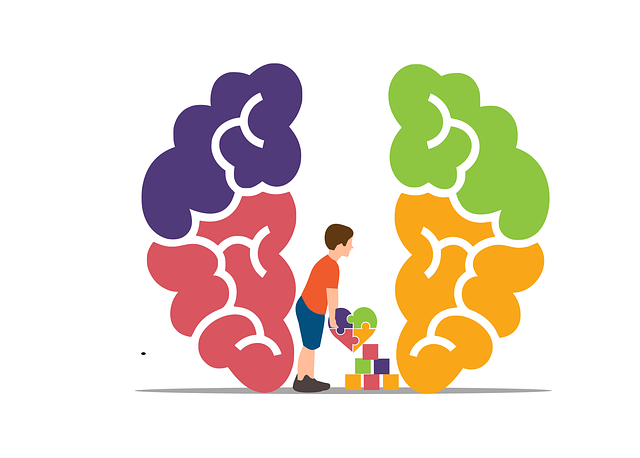Mental health professionals must balance care and risk management through comprehensive Parker Exposure and Response Prevention Therapy (E&RP)-based assessments, which consider client mental states, histories, and triggers. This approach empowers therapists to facilitate client empowerment while ensuring safe sessions. Evidence-based techniques like E&RP enhance coping abilities, prevent burnout, and promote a healthy work-life balance. Regularly evaluating and adapting treatment strategies, including E&RP, is crucial for optimizing patient care and addressing diverse challenges effectively.
Mental health professionals confront unique risks in their daily practice. This article explores a comprehensive risk assessment framework, focusing on the Parker Exposure and Response Prevention (PERP) Therapy approach. We delve into identifying potential hazards, from patient disclosures to self-care challenges. By implementing robust safety measures and crisis protocols, professionals can ensure secure environments. Continuous evaluation is key to adaptation, enhancing patient care, and mitigating risks effectively.
- Understanding Risk Assessment in Mental Health Practice
- The Parker Exposure and Response Prevention Therapy Framework
- Identifying Potential Risks and hazards for Mental Health Professionals
- Implementing Effective Safety Measures and Crisis Protocols
- Continuous Evaluation and Adaptation for Enhanced Patient Care
Understanding Risk Assessment in Mental Health Practice

Mental health professionals are tasked with a delicate balance: providing care while managing potential risks to both themselves and their clients. Risk assessment is a crucial component of this process, helping practitioners identify, evaluate, and mitigate dangers that may arise during therapy sessions. This involves understanding not only the client’s current mental state but also their history and potential triggers. By employing evidence-based methods like Parker Exposure and Response Prevention Therapy (EBT), professionals can facilitate clients’ inner strength development and anxiety relief while ensuring a safe therapeutic environment.
Comprehensive risk assessment goes beyond simply identifying vulnerabilities; it empowers mental health experts to create individualized treatment plans that cater to each client’s unique needs. Through careful consideration, practitioners can develop strategies to prevent and manage crises, fostering a supportive atmosphere where clients feel empowered rather than threatened. This proactive approach not only enhances the effectiveness of therapy but also contributes to the overall well-being of both the mental health professional and their clientele.
The Parker Exposure and Response Prevention Therapy Framework

The Parker Exposure and Response Prevention (E&RP) Therapy Framework is a structured approach designed to help mental health professionals effectively manage stress and prevent burnout. This evidence-based method encourages therapists to gradually expose themselves to situations that may trigger anxiety or stress, while simultaneously preventing any impulsive responses that could perpetuate the issue. By doing so, it enhances their ability to handle challenging scenarios in the therapeutic setting.
This framework not only equips healthcare providers with advanced coping mechanisms but also boosts their confidence when dealing with high-pressure situations. It’s a powerful tool in the arsenal of burnout prevention strategies for healthcare providers, enabling them to better manage stress and maintain a healthy work-life balance.
Identifying Potential Risks and hazards for Mental Health Professionals

Mental health professionals often find themselves at a unique intersection of intense emotional demands and complex patient interactions. Identifying potential risks and hazards is a crucial step in ensuring their well-being, especially considering the sensitive nature of their work. These professionals may face challenges that impact not just their mental health but also their ability to provide effective care.
One prominent risk area involves exposure to traumatic experiences shared by clients undergoing therapy, such as those seeking Parker Exposure and Response Prevention Therapy for PTSD. This treatment approach necessitates a deep exploration of distressing memories and emotions, which can be emotionally taxing for the therapist. Additionally, healthcare provider cultural competency training becomes vital, as professionals must navigate diverse patient backgrounds and perspectives, fostering an environment that promotes both self-esteem improvement and inner strength development to cope with these varied challenges.
Implementing Effective Safety Measures and Crisis Protocols

Mental health professionals play a crucial role in helping individuals navigate and overcome significant challenges, but they are also at risk of experiencing secondary trauma and burnout. Implementing effective safety measures and crisis protocols is essential to mitigate these risks. One evidence-based approach that integrates both exposure and response prevention therapy (ERP) and social skills training is showing promise. By combining ERP, which helps clients confront and manage distressing memories and emotions, with social skills development, professionals can enhance their ability to support individuals in traumatic situations.
Additionally, fostering inner strength through self-care practices and trauma support services plays a vital role in maintaining resilience among mental health workers. Regular training sessions focused on crisis management and de-escalation techniques ensure professionals are well-equipped to handle challenging scenarios safely and effectively. These proactive measures not only protect the well-being of mental health professionals but also improve their ability to provide high-quality care, ultimately enhancing the overall therapeutic process.
Continuous Evaluation and Adaptation for Enhanced Patient Care

Mental health professionals must embrace a culture of continuous evaluation and adaptation to ensure optimal patient care. This dynamic approach involves regularly assessing treatment effectiveness and adjusting strategies accordingly, drawing from diverse evidence-based methods. For instance, integrating Parker Exposure and Response Prevention Therapy (ERTP) alongside Social Skills Training and Self-Awareness Exercises can enhance patient outcomes by targeting specific challenges.
By fostering Emotional Intelligence, professionals can better navigate complex patient dynamics, adapt their interventions, and ultimately provide more personalized support. This iterative process of evaluation and refinement is essential for staying abreast of emerging research and best practices, ensuring that mental health services remain effective and responsive to the evolving needs of individuals seeking help.
Mental health professionals must continually assess and mitigate risks to ensure patient safety and well-being. By understanding risk assessment principles, adopting frameworks like the Parker Exposure and Response Prevention Therapy, and implementing robust safety measures, practitioners can create a secure environment for both patients and themselves. Continuous evaluation and adaptation are key to enhancing patient care, ensuring that mental health services remain effective and responsive to evolving challenges.














